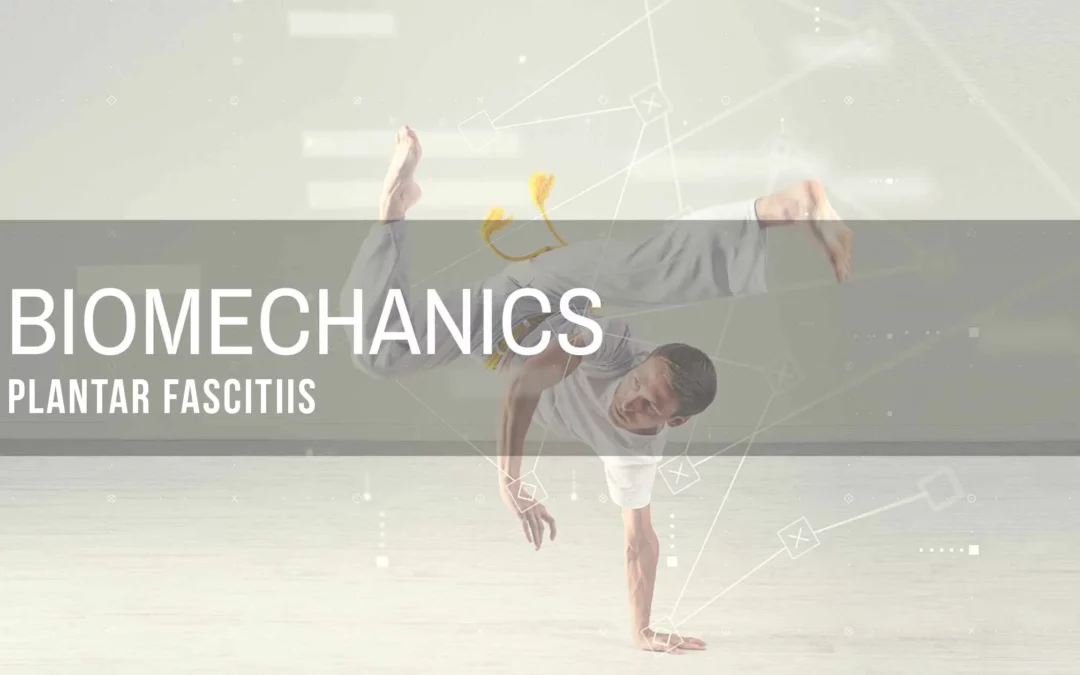One of the most common overuse injuries of the foot found in athletes like runners and cross country skiers is plantar fasciitis. It is estimated that over 2 million Americans are affected by this each year and up to 10% of individuals experience this nagging heel and/or hind foot pain throughout their lifetime.
According to studies, most push through this pain and experience symptoms for 1+ years prior to seeking out medical treatment.
If you are like most, instead of waiting a full year with symptoms, why not learn how to prevent this nagging injury in the first place?
STAY TUNED…
Plantar fasciitis pathology typically presents as sharp heel pain with initial steps following a period of inactivity and/or worsening heel pain with prolonged weight bearing.
BUT WHAT CAUSES THIS?
As with most cases of plantar fasciitis, multiple contributing factors play a role in its formation.
Increased plantar fascia thickness, fad pad compressive disturbances of the heel, recent increase in activity, range of motion deficits, increased pronation of the foot and/or fear of movement behaviors can be contributing factors for an individual’s pain perception.
Those all sound good but what is something you can ACTUALLY work on and change?
First off, follow a periodized training schedule to introduce appropriate workload to ensure tissues safely and readily form meaningful adaptations over time.
Secondly,
IMPROVE ANKLE RANGE OF MOTION.
Active and/or passive range of motion deficits in ankle dorsiflexion is associated with plantar fasciitis.
This is the motion of pulling your ankle/toes up toward you.
If tightness/stiffness is present…
These deficits can lead to excessive stress transmitted through the plantar fascia which may eventually thicken (as seen on ultrasounds) and cause pain.
The range of motion restrictions can also cause shortened stride lengths, thus decreasing your overall performance.
Stretches that incorporate the windlass mechanism of your foot are also helpful.
IN ADDITION…
The inefficient way ground reaction force is transmitted through an ankle with limited dorsiflexion mobility can lead to GLOBAL MOVEMENT COMPENSATIONS up the chain at the knees and/or hips and eventually cause other issues and pain.
LET’S ADD ONE LAST ACTIVITY.
Your balance and ability to support a neutral arch is important.
Over pronation or toeing-out has been associated with increased risk of plantar fasciitis.
If one cannot perform this simple exercise in a controlled environment where there is no dynamic activity or changes in center of mass, how can one expect to be able to control this when much higher demands are introduced to the body?
YOU CANNOT!
You would not believe how difficult this is for most individuals.
Simple single leg balance activities while maintaining a neutral arch are a great place to start.
Once this is mastered, appropriate progressions can be made to increase the challenge and improve the simulation of related activities.
With these changes made, your body will be able to more efficiently move and transmit the forces required for your activity.
Thus, decreasing the likelihood of plantar fasciitis.
And better yet…
IMPROVING PERFORMANCE!
In the case that these changes do not help, there are more individualized treatment options available like manual therapy/mobilizations, night splinting and temporary anti-pronation taping techniques or orthotics that a skilled physical therapist or movement specialist may be able to assist with.
And Remember…
YOUR BODY WAS DESIGNED TO MOVE!
- Martin RL, Davenport TE, Reischl SF, McPoil TG, Matheson JW, Wukich, DK, McDonough CM. Plantar Fasciitis: Revision 2014 Clinical Practice Guidelines Linked to the International Classification of Functioning, Disability and Health From the Orthopaedic Section of the American Physical Therapy Association J Orthop Sports Phys Ther. 2014;44(11):A1-A23. doi:10.2519/jospt.2014.0303
- Al-Bluwi MT, Sadat-Ali M, Al-Habdan IM, Azam MQ. Efficacy of EZStep in the management of plantar fasciitis: a prospective, randomized study. Foot Ankle Spec. 2011;4:218-221. http://dx.doi.org/10.1177/1938640011407318
- Di Caprio F, Buda R, Mosca M, Calabrò A, Giannini S. Foot and lower limb diseases in runners: assessment of risk factors. J Sports Sci Med. 2010;9:587-596.
- Digiovanni BF, Nawoczenski DA, Malay DP, et al. Plantar fascia-specific stretching exercise improves outcomes in patients with chronic plantar fasciitis. A prospective clinical trial with two-year follow-up. J Bone Joint Surg Am. 2006;88:1775-1781. http://dx.doi.org/10.2106/JBJS.E.01281
- Hill CL, Gill TK, Menz HB, Taylor AW. Prevalence and correlates of foot pain in a population-based study: the North West Adelaide health study. J Foot Ankle Res. 2008;1:2. http://dx.doi.org/10.1186/1757-1146-1-2
- Sobhani S, Dekker R, Postema K, Dijkstra PU. Epidemiology of ankle and foot overuse injuries in sports: a systematic review. Scand J Med Sci Sports. 2013;23:669-686. http://dx.doi. org/10.1111/j.1600-0838.2012.01509.x
- Yi TI, Lee GE, Seo IS, Huh WS, Yoon TH, Kim BR. Clinical characteristics of the causes of plantar heel pain. Ann Rehabil Med. 2011;35:507-513. http:// dx.doi.org/10.5535/arm.2011.35.4.507





